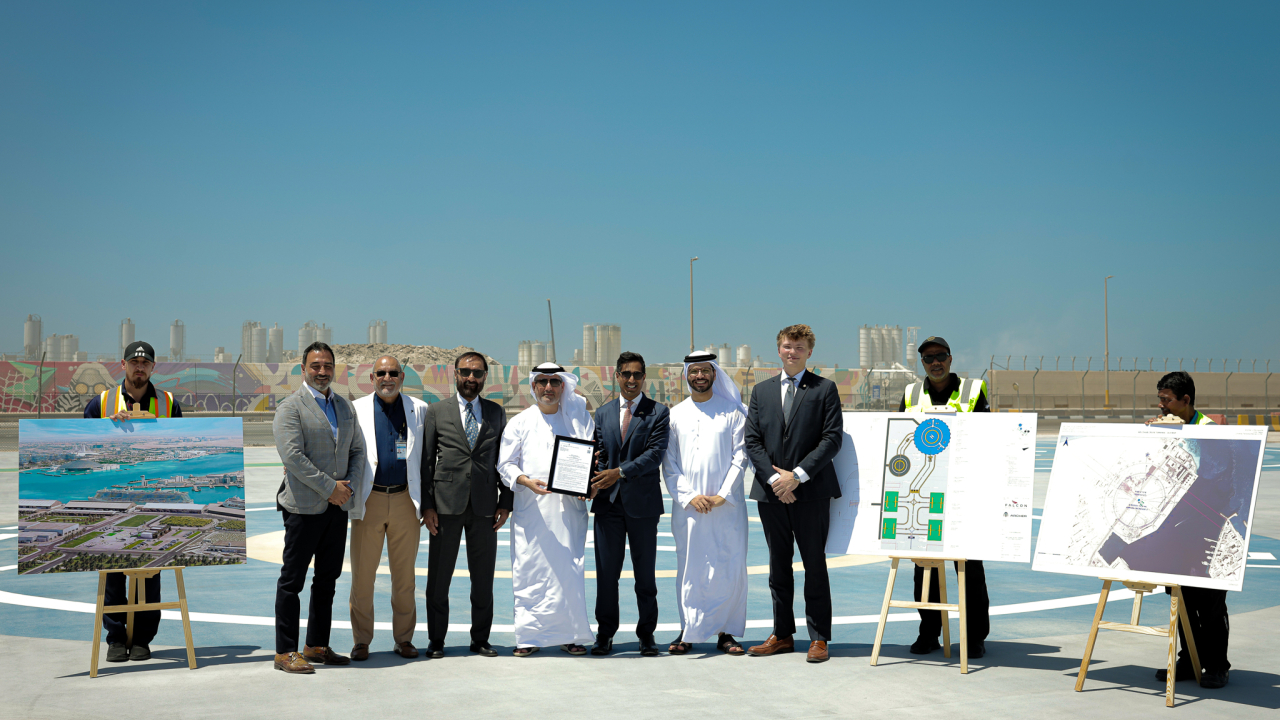Always a healthy workload for the flying doctors
An increasing number of charter operators in the Middle East are offering air ambulance and medevac services, keeping local citizens in the peak of good health. Liz Moscrop reports.

The Roman poet Virgil wrote that the greatest wealth is health. The world has changed dramatically since he penned the sentiment 2,000 years ago, but the feeling remains the same. People are prepared to pay handsomely for services that offer the best medical care when they fall ill.
Several private jet companies have capitalised on this desire and are providing medical evacuation and air ambulance services to whisk clients to a hospital of their choice at a moment’s notice.
Abu Dhabi-based Royal Jet, for example, offers a Learjet 60, a Gulfstream G300 and a BBJ that can be configured for medevac flights, ranging from one to 20 patients. To date the company has completed more than 1,000 missions – although thankfully it has never had to cater for 20 sick people at once.
Chief operating officer John Morgan said: “Medevac accounts for 15-16 per cent of our missions. It is a recession-proof offering.”
The Royal Jet medical team has specific expertise in cardiology, paediatric, neo-natal and intensive care. The fleet carries advanced machines, such as state-of-the-art neo-natal ventilators and defibrillators, as well as modern critical care mobile intensive care unit (ICU) equipment. When a call comes in, Royal Jet sends a specialist doctor to assess the patient to see if he or she is fit to travel. If well enough, the company can convert and despatch an aircraft in four hours. They are thoroughly sterilised before and after each mission.
Dr Casin Soto is the company’s chief medical officer. Formerly a chief consultant to the Department of Health in
The body undergoes physiological changes in the air, so people who are unwell are further disadvantaged by less oxygen, pressure and vibration at altitude. Because of this Soto explained: “It is really important to have properly trained staff with full aeromedical qualifications.”
Aircraft are kitted out like an average hospital ICU and the team can perform basic emergency procedures if required. However, the ideal setting for that kind of care is on the ground where there is extra back-up should that be needed. The doctor added: “The patient should be stable enough to travel but we are able to perform small procedures like a tube in the neck, nose or chest. We try not to do this generally as there is only one doctor and one paramedic in the aircraft normally. In a hospital there is greater back-up with more medical staff and equipment.”
Other operators in the region offering medevac and air ambulance services include Amman-based RayaJet. The company started charter operations in 2005 with a Bombardier Challenger 601 and also has a Cessna Citation 650 on its books. Although the downturn hit the business aviation sector in
Fellow Jordanian operator Arab Wings also provides medical evacuation services. Like Royal Jet, it says that its medical team can have an appropriate medevac aircraft available with as little as four hours’ notice, 24 hours a day, seven days a week, anywhere in the world. Its aircraft can be configured into mini ICUs equipped for critically ill patients.
In
Further afield,
The Saudi Red Crescent Authority (SRCA) took delivery last December of an Airbus A318. Reports in January indicated that the aircraft would serve in a medevac capacity both within
All of the SRCA’s air fleet is designed to have multi-role capabilities and larger aircraft such as the A318 also retain their conventional configurations, allowing the SRCA to offer them on charter arrangements when they are not in use as air ambulances.
Most companies providing medevac services need convertible aircraft. To cater for this Project Phoenix, the Dubai-based aircraft conversion specialist, signed an agreement last year with
Spectrum provides a medical interior and full range of medical equipment and will be Project Phoenix's preferred and recommended aeromed provider. In return, Spectrum will refer any interested clients to Project Phoenix.
The two companies will also review future conversion of other larger airliner types, such as the Boeing 737 and Airbus A320 series. Spectrum Aeromed has some 50-plus supplemental type certificates on 250 aircraft types. Project
Meanwhile, Action Aviation and SJ30 manufacturer Emivest Aerospace have announced that the SJ30 light jet is now available in an air-ambulance configuration. The medevac variant is a quick fit conversion provided by medical interiors specialist Lifeport. According to Action Aviation, the SJ30 is particularly well suited for medevac missions because the cabin pressure is maintained at sea level even at 41,000-feet.
The interior includes a seamless floor infused with biocide and fungicide. It also includes a lockable drug box and a suction canister. ICU comes from a MedPak, including oxygen, compressed air, vacuum and AC power. A modular MedWall centrally locates switches and outlets for patient care. Action Aviation chairman Hamish Harding said: “The cost per mile of the SJ30 as an air ambulance is probably the lowest in the industry due to its low fuel burn and high cruise speeds.”
Although such costs are always an important factor, they are unlikely to form a great part of clients’ decision-making process when booking an air ambulance. Demand for care in the air will never subside as long as people continue to fall ill. As the old Arabic proverb says: “He who has health has hope; and he who has hope has everything."
Stay up to date
Subscribe to the free Times Aerospace newsletter and receive the latest content every week. We'll never share your email address.

